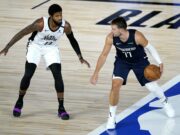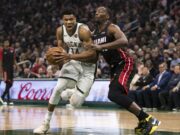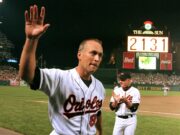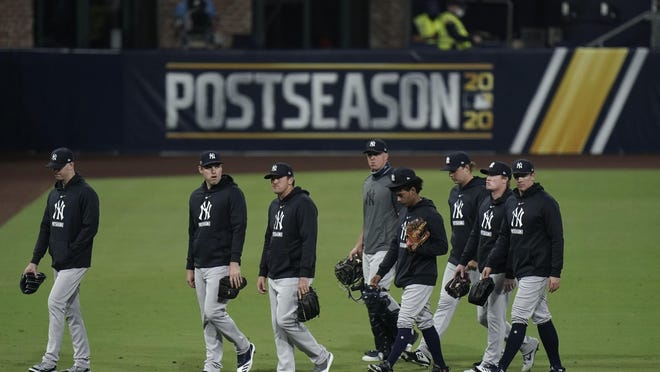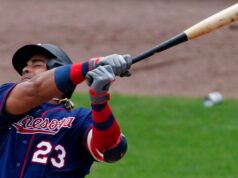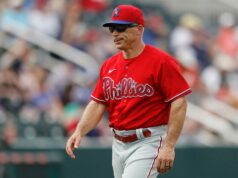On December 18th, 2008, the New York Yankees signed both CC Sabathia and AJ Burnett to headline their starting rotation in a push for the team’s twenty-seventh World Series title. The duo would combine to go 32-17 in their debut season in pinstripes and help guide New York to a championship. The signings were indicative of a trend of the New York Yankees teams of the mid-to-late 2000s. For a period of about seven or eight years, the Yankees were, by and large, a team constructed on the free agent market. Sure, you had the homegrown products of Derek Jeter, Robinson Cano, and Brett Gardner, but, for the most part, the Yankees went outside their organization to fill out their major league roster.

In recent years, we’ve seen the Yankees revert to a more traditional route to roster construction. Granted, by no means are they afraid to go out and acquire the biggest names on the market via free agency or trade, but the Yankees have largely taken a homegrown approach, particularly with their starting rotation. Since that 2009 season, the Yankees have averaged about one starter per year who came from outside their organization. In 2011, you saw veterans like Bartolo Colon and Freddy Garcia fill out the backend of the rotation. Three years later, the Yankees made a splash on the international market with their signing of Masahiro Tanaka. 2020, Gerrit Cole. Still, for the most part, the Yankees have relied on their farm system to pump out guys like Phil Hughes, Luis Severino, Jordan Montgomery, Domingo German, and Ivan Nova to eat up the majority of innings.
Subverting our Expectations
This trend towards internal development makes what’s about to happen in 2021 surprising. Over the past few weeks, the New York Yankees have frontloaded their rotation with outside arms. Corey Kluber, Gerrit Cole, and Jameson Taillon will occupy the top-three spots in the rotation with Deivi Garcia, Jordan Montgomery, and Domingo German filling out the backend. The last time we saw the Yankees feature such a group of externally developed starters was back in 2005 when their rotation consisted of Randy Johnson, Kevin Brown, Mike Mussina, Carl Pavano, and Jaret Wright.
It’s a significant break from what had been a twelve-year trend of favoring youth over experience within the organization. While we know what to expect from ace Gerrit Cole, there are legitimate questions surrounding the supporting cast, particularly around newcomer Corey Kluber. The longtime Cleveland ace could be the difference between the Yankees packing one of the American League’s best 1-2 punches at the top of their rotation or he could be a financial liability (albeit a short-lived one) who struggles to perform on the field.
Corey Kluber: Dropping the Hammer
It’s difficult to forecast the type of season to expect from Corey Kluber. At his best, Kluber is one of the game’s premier strikeout artists who excels at inducing whiffs (career 24.5% rate on swings-and-misses) and weak contact. Kluber’s done so despite featuring a pitch mix below the MLB average in terms of vertical movement. Pitches that move side-to-side tend to be easier for batters to follow through on and take to the opposite field. Keep your hands back, track the pitches movement, and take it the other way. Pitches that break up and down are much harder for players to hit. There is a much more limited swing path to the ball. Case and point, check out this 12-6 breaker from Clayton Kershaw.
Clayton Kershaw, Cooperstown Curveball. 👑 pic.twitter.com/NeBiCeRvpl
— Rob Friedman (@PitchingNinja) March 5, 2020
Nasty. As I said, vertical movement, harder to hit. You’re more likely to swing over the pitch. Yet, Kluber has proven to be an anomaly. As I mentioned, horizontal movement is usually easier to hit. Not so with Kluber whose entire arsenal is predicated on extreme horizontal movement. Over the past five years, Kluber’s sweeping curveball has been one of the most difficult pitches to hit in the majors. Check him out freezing Yuri Gurriel on a front-door curveball in 2018. Just nasty.
Corey Kluber, Locking up Gurriel on an inside Curveball. 🔐 pic.twitter.com/zBl3wETqxj
— Rob Friedman (@PitchingNinja) May 19, 2018
Measuring Risk vs. Reward for the New York Yankees
If Corey Kluber can get back to being even remotely close to the type of pitcher he was from 2016-2018, the Yankees just might’ve made the deal of the offseason. That’s a big ‘if’, however. Corey Kluber has battled a litany of injuries to his bicep, shoulder, and abdomen over the past few years. At age 34, it’s just as likely that Kluber crashes and burns as opposed to lighting the league on fire.
Since a 20-7 record in 2018, Kluber has appeared in just 8 MLB games with a 5.65 ERA to boot. Ignoring his one-inning appearance in 2020, Kluber’s walk rate of 3.79-per-9 nearly doubled his career mark in 2019. Opponents hit .370 on balls in play against him that year. Hitters are going the other way more and more off of Kluber, perhaps buying into my thoughts about sitting back and taking breaking pitches to the opposite field. Putting opponents on-base and then yielding hard contact is not a recipe for success at the major league level.
Still, underlying metrics would portend that perhaps we should be optimistic about the talented righty. While Kluber’s velocity is down a smidge, he’s always been a guy who sits 91-92 on his sinker/fastball. Losing a hair off MPH isn’t going to necessarily spell doom for him. Even in his disastrous 2019 season, he still featured a curveball in the top half of the league in spin rate. His whiff rate was one of the highest that he’d posted in his career. Opponents’ chase rate (swings on balls outside the strike zone) was in line with his career average.
Conclusion
The ingredients for a successful return to form are there. In his open bullpen session prior to signing with the Yankees, scouts were impressed with where he was at given that stage of the offseason. Time will tell if this low-risk signing works out for the New York Yankees. The Bronx Bombers are running a risk, though, by relying on Kluber to round back into form. Let’s see if it works out for them.
Three Up, Three Down is a weekly roundup of three news stories from around Major League Baseball. The focus of each edition will rotate on a divisional basis. This week’s top news stories out of the AL East are the bizarre offseason plans of the Boston Red Sox, the rise of Ray’s prospect Wander Franco, and the construction of a high-risk, high-reward rotation in the Big Apple.













